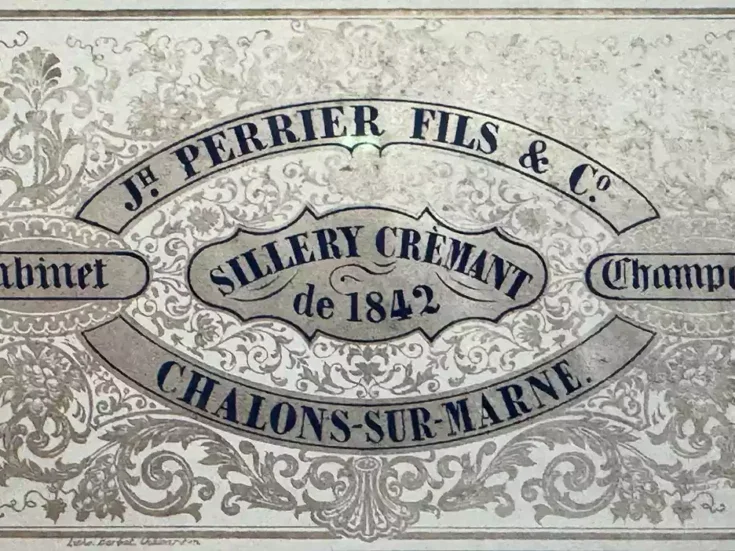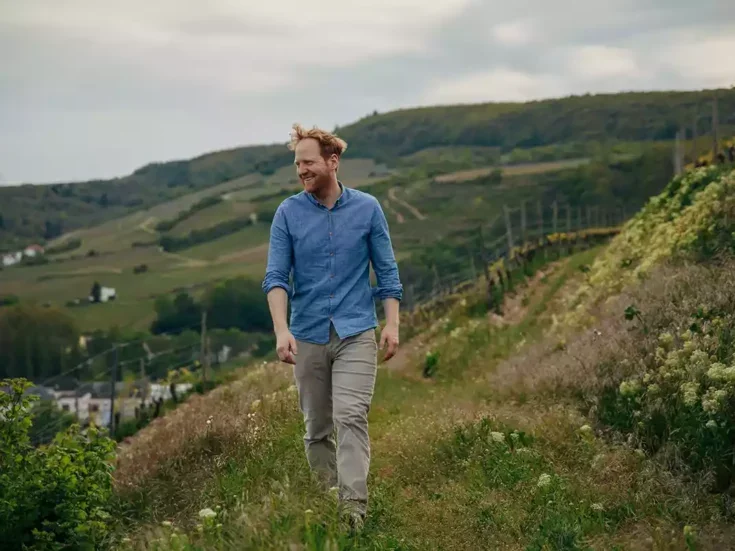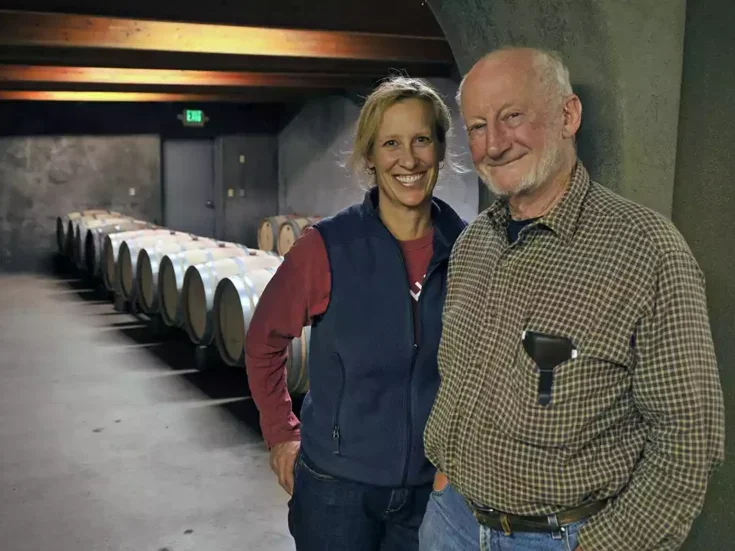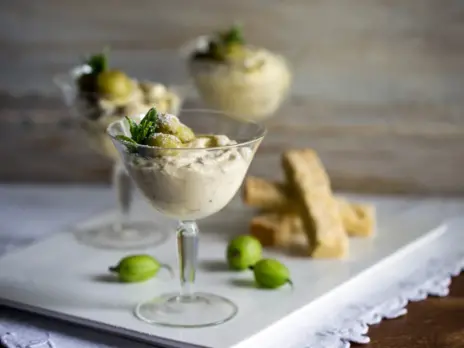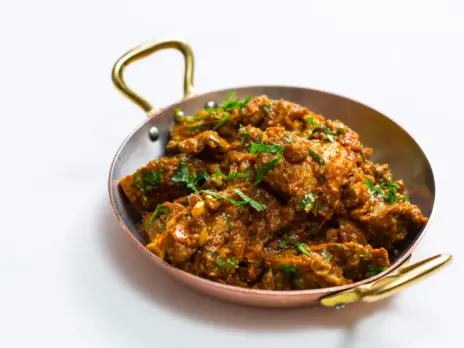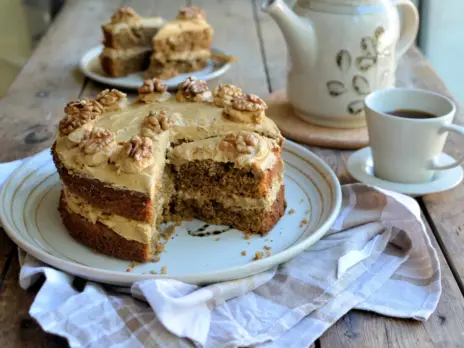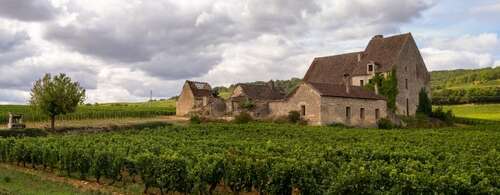
CHASSAGNE-MONTRACHET
DOMAINE JEAN-MARC BLAIN-GAGNARD
Jean-Marc Blain harvested September 3–9, working in the morning and in the evening from 4pm to 6pm, and found the quantities generous, but not too high, as the cover crops gave some competition. He hoes under the vines. “The whites are rounder and richer than 2022 and have less acidity.” The pH for the whites didn’t change much after MLF.
The red grapes are all destemmed and refrigerated to 15–16ºC (59–61ºF). Covered with carbonic gas for four to five days. Warmed for half a day, then the rapid part of the fermentation went quickly over three or four days. Two to three light pigeages at the start and then only remontage. Vatting is not long—15–16 days in total. The reds were racked in July 2024, and largely bottled before Christmas. “Facile and pleasant, for drinking early. Simpler wine for reds than for the whites in this vintage,” observes Jean-Marc.
Puligny-Montrachet
Straight, citrus, and lively, with a stone minerality. The vines, in Rue aux Vaches under Pucelles, are now 70 years old. Super-savory. 2026–32. 88
Chassagne-Montrachet Premier Cru Les Caillerets
A long strip of vines from the bottom, to the top of the climat, where you can find a lot of oyster shells. Aromatically ripe. Hot stone. A silky ripple into the palate. Seductive yet austere. Hot and cold wine, with a persistent finish. Sapid grip at the end. Much more sophisticated. 2026–35. 94
Chassagne-Montrachet Premier Cru Morgeot
Rich, greengage fruit. Juicy and generous strike. From the lieu-dit Boirettes, by the Abbey de Morgeot, where the soil is heavy, sticky red clay, reflected in the rounded and full palate and the grunt. 2027–35. 92
Criots-Bâtard-Montrachet Grand Cru
No new barrels, just a one-year-old and a five-year-old. It is lightly glossy, showing delicious ripeness and a scratchy, chalky note that underscores the palate and carries to the finish. A need to wait for the fruity richness to subside, as there is a more subtle wine beneath. 2028–35+. 95
Le Montrachet Grand Cru
One barrel only, of one-year-old oak. Jean-Marc finds menthol aromas. A lovely finish: very straight, super-persistent, and cool. Yes, this is very cold and lightly austere. The wine is generally very reserved and salty. 96–97
Red
Bourgogne Passetoutgrains
Lots of red fruit, light tannin, and tartly fresh to finish, from this parcel that is under Volnay. Two thirds old-vine Gamay, planted 70 years ago. “We always have a low yield, of about 40hl/ha, and it is of good quality.” Aging in old barrels. 2026–20. 82
Chassagne-Montrachet
Two plots—Les Chaumes, where there is red clay, and Goujonne: “small iron stones in this parcel.” Bright and slightly rustic, for early drinking, with plenty of cranberry-fresh fruit and a light snap. 2026–28. 86
Chassagne-Montrachet Premier Cru Clos St-Jean
Super-smooth texture and succulent. Glides easily. Very supple. 2027–32. 88
Pommard
From 40-year-old vines in lieu-dit Les Combes, on the Volnay border. There is more clay in the soil here, and this makes for an easy and fruit -driven wine. Super-juicy, with an open palate, gurgling fruit, and soft tannin. 2027–32. 86
Volnay Premier Cru Pitures
“Lots of marl in the soil here,” in the Dessous section. A bright, lifted, and slightly mineral palate, tight and a bit grippy and clipped at the edges. Straight and lively. A little austere on the finish, but I like the sapid bite. Plenty of energy. 2027–32. 90
DOMAINE BRUNO COLIN
“We had good fruit, ripeness, and balance,” remarked Bruno Colin, who harvested September 5–13, beginning early morning, at 6.30am, and finishing at 3.30pm. He cools the whites to 14ºC (57ºF) during débourbage after pressing. There is a little foulage: “It is better to crush a little, as my press program is only about 2 hours, so I like some juice at the beginning. I have a vibrating table and one table is one press. I don’t want to hold the grapes in the press.” He added some SO2 to the tank and took most of lees this year, as “they were good. When we rack a year later, it is about 2 to 3 liters per barrel, so about 1% of lees.” 90% of production is now fermented in 350-liter barrels, which he started in 2008, with a full conversion in 2015. Some 228-liter barrels for grands crus, as this is usually one barrel, which go into a two-year-old barrel and, after racking, into a wine globe. Because these are near the door, they are covered in black fabric. Bruno has also used 350-liter barrels for the reds since 2019.
He will bottle in January 2025—a little earlier for the 2023s. Sometimes it is March, but with an early harvest in 2023, he racked in September, and says four months is enough in tank for this vintage.
“A fresh vintage, with good ripeness as well as freshness.” I have a lot of old vineyards, and everyone said there was a lot of wine in 2023, but not for us. We had less wine in 2023 than in 2022—but still about 53hl/ha for old-vine Chardonnay, which is good for us.”
Such a stylish winery and tasting room—nowhere else do I taste with 1980s soundtracks humming in the background. There’s even black toilet paper, to match the bathroom walls. Not very Burgundian, perhaps, but I’m happy with that. It wasn’t like this 20 years ago… but the wines have always been good. A more modern, fruit-driven style, perhaps, but this makes the terroir super-easy to see.
Bourgogne Chardonnay
This is from a parcel between Santenay/Maranges, and some purchased grapes from the same producer for 20 years now near Chassagne. Lightly rounded and juicy, fresh and citrusy. Very pleasing indeed, with nice freshness. 2025–28. 85
St-Aubin Premier Cru Les Charmois
Smooth and flowery, supple, rounded, and gentle, with just a light lift to finish. Very pleasing. 2026–30. 88
Chassagne-Montrachet
This is the first vintage for this wine. From En Journoblot, just under Criots-Bâtard, planted in 1955—the oldest vines of Bruno’s village parcels—all worked by hand. Only 0.07ha (0.17 acre), which makes about 750 bottles. A two- and three-year-old barrel, 350-liters and 228 liters. A richer and deeper palate than the regular cuvée, with more phenolic grip and density. Creamy and succulent to finish. 2026–35. 90–91
Chassagne-Montrachet Premier Cru Blanchot-Dessus
From vines at 250m (800ft). Broad and full-bodied wine, savory, yet there is juicy freshness to finish, which is much “sweeter” at the end than the En Remilly. 2028–35. 94
Chassagne-Montrachet Premier Cru Les Chaumées
Lime-flower aroma, then this twirls across the palate, so bright and pretty and lime-fresh to finish. Just a touch saline, too. 2026–32. 92–93
Chassagne-Montrachet Premier Cru Les Chenevottes
There is more clay in this vineyard, a 0.09ha (0.22-acre) parcel by the main road to St-Aubin. Super-juicy, chunky, and inviting. It’s a happy, expressive wine, with yummy fruit and bright freshness. Looser texture, but so inviting. 2017–35. 92–93
Chassagne-Montrachet Premier Cru La Maltroie
From a parcel—Ez Crets (0.55ha [1.36 acres])—planted to Chardonnay in 2023, on 3309 rootstock, as there is no problem with drought here. Crystalized ginger on the nose, and a ripe and generous palate, too. Sumptuous, with a fresh cut of peppery, juicy, fresh ginger on the finish. Distinctive and appealing. 2027–32. 93–94
Chassagne-Montrachet Premier Cru Les Morgeot
From Francemont, on the border of Santenay, where there is more limestone, especially as this parcel goes up-slope to touch Embazées. A straight and lightly austere Morgeot, with a clip and savory, stony freshness and tension on the finish. Salty. 2027–35. 94
Chassagne-Montrachet Premier Cru En Remilly
High-toned and straight, deep and intense. Lovely drive into the finish, which is persistent and slightly austere. I love this. 2027–35+. 94–95
Chassagne-Montrachet Premier Cru Les Vergers
Smooth stone and silky-supple, this fluid and lightly rounded wine is very charming. The satin is intwined with freshness. Delightful. 2027–35. 93–94
Puligny-Montrachet Premier Cru La Truffière
Lightly exotic, this is both delicate and ripe in aroma. Floral, for sure, elegant and perfumed pink to finish. Light though. Make no mistake. Not rich. It floats on the palate. 2027–35. 94
Chevalier-Montrachet Grand cru
From old vines planted in 1962, which came via Bruno’s mother, and he got half. The family has 0.3ha (0.75 acre), through the grandparents. Just one 228-liter barrel. This is powerful and juicy. Remarkably fruity and super-juicy upfront this year. An impressive, long, cold shiver on the finish. Very precise and focused. 2028–40. 98
Corton-Charlemagne Grand Cru
From Languettes, purchased as juice just after press: “I ask for some lees.” This is in a two-year-old François Frères barrel. Very zesty, vibrant, and tense, and it shivers a little on the finish. Lively, long finish. A négoce wine, but I like it a lot and prefer it to the Bâtard. 2028–35. 96
Red
For the reds, there was no pigeage, only remontage, and rack-and-return. All destemmed in 2023. “I like the reds in 2023. A very fruity vintage—we have so much freshness and we don’t have too much alcohol. So fresh and clean and ready to drink early. This style of wine is to drink early not to keep ten years in the cellar. The last few vintages are better than before for the reds.”
Chassagne-Montrachet
From four parcels. Quite tutti-fruity, very ripe. The average vine age is 45 years old. I like the ripe cherry fruit. Really lively and crisp. Tannin wafts by. The vatting was just 10–12 days. Approachable. 86
Maranges Premier Cru Fussières
More restrained on the nose. Bright and zesty. This fizzles. Vibrantly juicy, ripe fruit. Snappy to finish, and a touch of bitterness. A bit stemmy, in a good way, but there is no whole-bunch here. It has a light, herbal grip, which I like. 2026–32. 88
Santenay
Fruity and juicy, with soft tannins. Accessible and pleasant. Lots of really red fruit. From Les Prarons -Dessous, planted in 1959. Yum. 2025–28. 86
Santenay Premier Cru Gravières
Ripe forest fruits and more tannin, with a burlier and richer character than the Fussières, which I prefer, but this does push on very nicely into the finish. 2027–32. 88
DOMAINE RICHARD FONTAINE-GAGNARD
Céline Fontaine remarked on the season: “Dynamic and quick growth of the vines. We had a hot summer, sufficient rainfall, so no hydric stress, but oidium from June, so we sprayed sulfur, and with leaf-plucking it was efficient. We harvested from September 1. It was very hot during the harvest, and the quality and style changed very quickly. We had a lot of grapes—the presses were full—I had never seen so much fruit in my 14 years. We were all exhausted by the end. The air conditioning was on all the time. From Volnay, the dried berries needed some sorting, but the whites were perfect.”
There is no La Romanée, which has been pulled out, but Rugiens is back, from young vines (the last vintage from the old vines was 2018). Céline is keeping Boudriotte and Grande Montagne for longer before bottling, and she wanted a second winter for all the wines, “to have more energy and tension.” She planned to keep them in tank until February 2025. Some white cuvées are now under Diam. Céline finds the reds “More supple than 2022, but the 2022s were more concentrated.”
Chassagne-Montrachet Premier Cru Caillerets
Rich, dense, and powerful. Muscular and lithe wine, with an earthy finish, almost gravelly. 2027–35. 94
Chassagne-Montrachet Premier Cru Clos de Murées
A greengage aroma and crystalized fruit. It was so hot in this climat that the vines stopped ripening for a while, but there is never a lot of sugar here. The 2023 is only 11.9% ABV and has a low pH. Savory, salty finish. 2027–33. 93
Chassagne-Montrachet Premier Cru Grande Montagne
From relatively young vines, at 33 years. Very white soil with a high proportion of stone, so the leaves can burn with the reflected sun, and the fruit is often eaten by wild boar. Tight and ripe characters combine here. A tense and compact palate, then this powers into the finish. Straight, defined, and stony. “Over the past five years, it has reached another level.” 2028–35+. 94
Chassagne-Montrachet Premier Cru La Maltroie
The old and weak, degenerative vine material here produces very small berries. Super-succulent and rather sumptuous. The concentrated mid-palate rises into a sappier finish. 2027–33. 93
Chassagne-Montrachet Premier Cru Morgeot
From La Grande Borne, quite a high parcel next to Santenay, with red soil and lots of stone. Super freshness and juiciness. Céline described it as “austere,” but I would say “sapid.” I like it. There is tension and drive. 2028–35. 93
Criots-Bâtard-Montrachet Grand Cru
Savory, saline, and stony. Rich but sharp and persistent, and really very salty. I prefer the line and edge on the Criots, by comparison with the Bâtard, which is thicker and “sweeter.” 2029–40. 96–97
Le Montrachet Grand Cru
From a one-year-old barrel. Straight, pure, intense, precisely edged, and so very long. Strangely, this was already all in place when I tasted it, and it was showing incredibly well. 2028–40+. 98
Reds
Chassagne-Montrachet Premier Cru Clos St-Jean
Rather elegant, with a red-fruit, supple sweep across the palate. It has charm and a touch of freshness to lift the finish. 2026–30. 90
Pommard Premier Cru Rugiens
The parcel, in the Haut section, was replanted in 2021, having been left fallow for a couple of years. Exuberantly fruity and softly juicy, with a touch of chalky minerality behind. Light tannins. Not quite as long as you might hope, but charming. 2026–28. 90
Volnay Premier Cru Clos des Chênes
I like the zesty energy and cut here. Good focus of red fruit on the mid-palate. Supple tannins. Savory chalkiness comes through on the finish. 2027–32. 93–94
DOMAINE JEAN-NOËL GAGNARD
Caroline Lestimé finds the reds “look toward the 2010, but this was more velvet, while 2023 has a more ‘sporty’ side. 2010 was more concentrated, while 2023 has a more dynamic dimension. 2023 has more freshness and juiciness than 2019. The 2023 whites are aromatic, with good freshness, very juicy and seductive. A sexy vintage.”
Bourgogne Hautes-Côtes de Beaune Clos Bortier
This parcel is just a little farther round the hill from Sous Eguisons, with more clay in the soil, and the result is juicer and fuller on the palate, more splashing. Yummy. 2025–28. 84
Bourgogne Hautes-Côtes de Beaune Sous Eguisons
From a parcel above St-Aubin Les Pucelles, en route to Rochepot. The first vintage was 2007. All in tank. “No stirring of the lees, which is impossible in our tanks.” 7,500 bottles. (Caroline will keep the current label design, which is different from that of the domaine’s other wines, but will remove her name, which appears to have been confusing customers.) White-flower aroma, with ripe citrus fruit and candied lemon peel on the mid-palate, slightly creamy and lightly piquant to finish. Pretty. 2025–26. 84
Chassagne-Montrachet Champ Derrière
There is rich, sandy, clay soil in this lieu-dit, which catches the cool at the end of the combe. It suffers when it is dry over the summer, as the soil can bake and crack. Rounded, soft, and generous, with a light freshness to finish. It had just been bottled when I tasted it, and Caroline explained that it was not then as energetic as it was before. 2027–32. 86
Chassagne-Montrachet Les Masures
Juicy and generous strike to a luscious, rounded palate, with an underscoring of light oak-tannin, which balances the fruit nicely. 2027–32. 88
Chassagne-Montrachet Premier Cru Blanchot-Dessus
Somewhat reserved for now. The palate is broad and layered and slightly sapid, with a fine and salty finish. 2028–35. 95
Chassagne-Montrachet Premier Cru La Boudriotte
Although labeled as Boudriotte, this is actually from Les Chaumes, which has very deep soil on a light slope, and in summer this clay can crack and the vine can stress a little. Rich, apricot fruit on the nose, and a peachy unfurling onto the palate, which is full and creamy, seductively fruity, with some density. 2027–35. 93
Chassagne-Montrachet Premier Cru En Caillerets
Apple-blossom floral notes combine with hot stone on the palate. Definitely ripe, but there is also cold grip and tension. Long and sapid. This is vigorous into the finish. Salt at the end. Possibly the best expression I tried this vintage. 2028–38. 95
Chassagne-Montrachet Premier Cru Les Chaumées
An aniseed nose and savory, almond attack. A little silky on the mid-palate, but overall, a straight and slightly nervy wine, with light lemon pith to finish. Despite the warm vintage, there is delicacy here. 2027–32. 93
Chassagne-Montrachet Premier Cru Les Chenevottes
White-peach fruit on this plumply rounded and fulsome palate, which has a light peach-skin bite. Upfront and expressive. 2027–35. 92
Chassagne-Montrachet Premier Cru Les Petits Clos
From a parcel just below La Romanée. Pounces onto the palate. Much colder and grippier than the Boudriotte, this has noticeable sapidity under the fruit and bite to the finish, which is chalkier and longer than the Boudriotte, neatly illustrating the differences within the large Morgeot climat. 2028–35. 95
Bâtard-Montrachet Grand Cru
Three barrels this year. A powerful, dense, and compact palate, with notes of marzipan. Rich, creamy, and full-bodied, growing in volume on the finish, which is both sumptuous and brooding, and certainly intense. An excellent finish. By the end of the first of two weeks of tasting in the Côte de Beaune, this was the best Bâtard I had tried. 2029–40. 97–98
Red
Bourgogne Hautes-Côtes de Beaune Clos Bortier
This parcel was planted just after World War II. Destemmed this year. Only in tank. Ripe, red-cherry aroma, with supple tannins on entry and a piquant, cherry-kernel note. Lively fruit. I like the crisp crunch at the end. The finish is really fresh and slightly bitter in a good way. 2025–28. 84–85
Chassagne-Montrachet L’Estimée
This cheerful Chassagne, also made in tank, has a red-cherry aroma. Light and pure, with cranberry and red-berry fruits, a waft of tannin, and a breezy feel. Nips in at the end with a light crunch. Super-approachable. Would be lovely lightly chilled on a summer’s day. 2025–29. 86
Chassagne-Montrachet Premier Cru Morgeot
Well, this has some bite to the tannin. A more robust and traditional, muscular and burly style of Chassagne, with breadth, earthiness, and chew to the finish. 2027–25. 91
Santenay Premier Cru Clos de Tavannes
Totally different from the Morgeot—the polar opposite. The perfume of strawberry fields in mid-summer. The tannins here are much finer and the palate is fluid and supple, glowing with ripe summer fruits. So very charming. 2027–35. 92
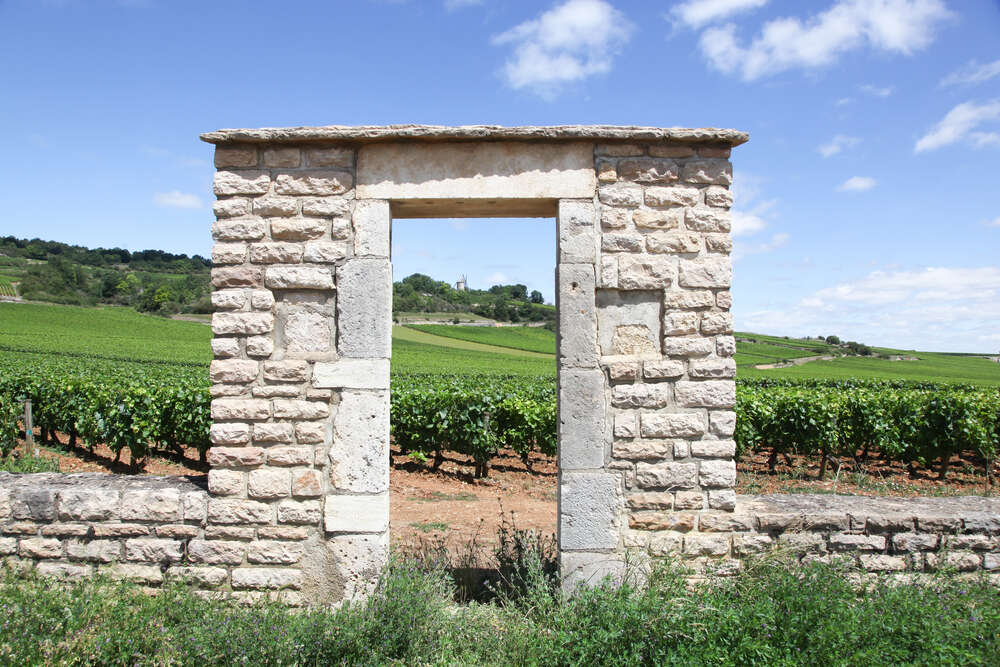
MAISON CAROLINE LESTIMÉ
“Before starting this ‘maison’ project,” explained Caroline, “I wanted the best premiers crus. But now I am looking for interesting village wine with less pretension. It has to be organic, must have personality, and must be good value.”
St-Romain Sous La Velle
Juicy and succulent, richer than the 2022 which I also tasted, which is lime-fresh, while this is more peachy and rich. That said, it has lively freshness and a fizzling finish. Jolly nice. 2026–29. 85
Savigny-lès-Beaune Les Planchots
From the Nord section (there is a river between it and Les Planchots de la Champagne below). “Not the dreamy part of Savigny,” chuckles Caroline. Straight, lightly savory, and slightly saline to finish. Spot-on. Just a couple of barrels. 2026–29. 86
ARMAND HEITZ
Domaine and négociant wines all come under the Armand Heitz label. Armand has a second domaine in the Beaujolais. “Historic yields in 2023. The weather was hot, but with a big yield, the balance did not change so quickly. When you have low yields, the alcohol and acidity levels change very fast, as in 2018. I didn’t do a green-harvest. I prefer to do the necessary work earlier in the year. When nature gives me fruit, I do not like to reject it, and I have a lot of old vines, which always give lower yields. The regional wines are on cordon de royat, so the level of production is quite regular.
“I always do ten to 14 days of vatting, so do only a very light extraction, as I like delicate wine and I work with whole-bunch (100% for all the reds). Only three pigeages in total, and a remontage every day. No pre-fermentation maceration. I like to work the way my grandfather was working. So, no temperature-control—the temperature is part of the vintage expression.” He presses to 1.4 bar and discards the end of the press. For oak: “Gauthier from the Loire a little bit, but mainly Chassin. Also Vicard—I think that in Bordeaux, where it rains more, you have a more delicate quality of oak. So, I work with one larger and one smaller cooper. For eight or nine years, I used 25% new oak. I tried to do less, but in 2023 I came back to 25%, which works with the whole-bunch style of the domaine.”
Whites were fermented until a specific gravity of 1.050–60 in tank, then moved to barrel. All the reds and whites were in bottled in October 2024. “I don’t like a long élevage,” said Armand, who does not add much SO2—about 60–70mg/l total and 20–25mg/l free for the whites, a little less for the reds. Reds and whites have all been bottled under Diam since 2005.
“Reds are elegant, soft, and well-balanced, with beautiful aromatics. The whites have acidity and are also elegant. I am happy with the style of 2023.” Armand finds them “nearest to 2018 for ripeness and balance and most like 2015 for richness—although in those vintages, people were happier with rich wines, and are less so now.”
Parcelle Interdite Vin de France
“Between 2017 and 2018, when it was possible to plant Vin de France land, I planted a little plot of Sauvignon Blanc.” It is aromatic but not overt. A rounded, barrel-fermented, more savory style. Quite nutty. 2025–26. 82
Bourgogne Aligoté
“Global warming is less of a problem for Aligoté than for Chardonnay.” This is from parcels below Volnay and another in the Corpeau region. Lime-citrus aroma, to a straight, pithy finish. I like this snappy little wine. 2025–28. 83–84
Bourgogne 3 Cépages
A blend of Chardonnay (80%), Pinot Blanc, and Pinot Gris. “The diversity of grape varieties in Burgundy is very important for the history of Burgundy, so I try to use every variety we are allowed.” Slightly spicy aroma, with a softly rounded, pump palate, just enough acidity, and a spicy aniseed note to finish. Easy appeal. 2025–27. 82
Pernand-Vergelesses Sous Les Clous
“The demand is not as strong as for St-Aubin, so the prices are not crazy.” A négoce wine. Ripe but savory, with a stony feel and an earthy finish. 2025–28. 86
St-Aubin Travers de Chez Edouard
A savory, stony note. Straight and tingling. Light and slightly chalky. 2025–28. 86
Chassagne-Montrachet Premier Cru Maltroie
From a parcel of 0.74ha (1.85 acres). “I started with this in 2013. A big personality,” says Armand. “Lots of clay here.” Full-bodied and broad, with savory underscore and a powerful push into the finish. Muscular. 2028–35. 93
Red
Beaujolais Juliénas
Bursting with delish ripe fruit and light soft tannins. 14.5% ABV. 2025–29. 83
Bourgogne
Red-cherry aroma. Juicy and lively, with smooth, light tannins, a fresh finish, and a delicate crunch at the end. 2025–28. 84
Chassagne-Montrachet Premier Cru Morgeot
“Francemont is a beautiful place, but the vineyard is very low-yielding and I will probably replant it to white.” Floral aroma, with a lively freshness and fine, glassy tannins. Crisp finish. “Very easy to work because of the limestone. It is not a heavy soil.” 2027–32. 92–93
Pernand-Vergelesses Premier Cru Fichots
A négoce wine. “Every year I have to be careful. The ripeness is there, as these are 100-year-old vines, but you feel the tannins, and we know to give it a short time in tank. Maybe I should destem, but I prefer to adapt the vinification rather than to destem. Or maybe I need a longer time in barrel. It is the cuvée where I do the least intervention—less new oak, less of everything.” Forest-fruit aroma. Succulent strike, slightly sturdy on the mid-palate. Nicely chewy and chunky. 2027–32. 87
Pommard Premier Cru Clos des Poutures
“Not too wet, easy to work, not too heavy. The soil is at the bottom of the hill, so there is a good balance of clay and rock. This clos has a warm mesoclimate, with less wind, so the fruit ripens very quickly here. I started in 2013, so this was the first place for my wine. I made that with the same philosophy—100% whole-bunch and no temperature-control—but 2013 was a much colder vintage, so the wine was light in color and reductive, and many people did not understand it.” The 2023 also has a greener aspect, but fine tannins. Elegant Pommard. I like the crunch, with a touch of tarragon, and the aromatic finish. 2027–32. 90
Volnay Premier Cru Taillepieds
From a 0.5ha (1.2-acre) parcel right at the top of Taillepieds, with lots of limestone. Snappier, firmer, but also richer than the Pézerolles. This bites into the palate. It has grip and intensity. “It gets ripe first and always has a big structure.” 2027–35. 94
DOMAINE RENÉ LAMY-PILLOT
Lamy-Pillot is now in conversion to organic viticulture and is concentrating on 12ha (acres) in Chassagne. Sébastien Caillat found the analytical figures for 2023 very close to those for 2018, but commented that the weather was drier and the style richer in 2018. “The 2023 is fresher and flintier and has more tension than 2018, but 2022 was crisper and fresher than 2023 at the same time after bottling.” We tried a 2022, but for me, it was not strikingly crisper than the 2023. The wines were to be bottled quite early for Lamy-Pilot, in August, while Lamy-Caillat wines had a second winter in tank.
St-Aubin Premier Cru En Créot
Dark, flowery aroma, then on the palate, it is spicy, generous, and succulent, slightly soft. Enveloping fruit. Most forthcoming. As Sébastien remarked, “This is the DNA of Créot.” 2025–29. 86
Chassagne-Montrachet Pot Bois
Fresh and juicy, with shiny minerality and a sweet/saline finish. Silky and whistling. It is very different from the Lamy-Caillat from the same parcel. 2026–29. 88
Chassagne-Montrachet Premier Cru La Boudriotte
From lieux-dits Les Chaumes and Champs Jendreau. Clean-edged, tight, and fresh. Combines tension with richness and body. Very good. 2027–32+. 93
DOMAINE LAMY-CAILLAT
Generally, the Lamy-Caillat style is savory, dense, and firm. They are wines with phenolic grip, built to last, though the Grande Montagne is more floral. Sébastien extracts tannin for his whites using his Vaslin presses. A very good Bourgogne, too.
Chassagne-Montrachet Pot Bois
Anise aroma. Bright, singing, and fresh attack, with a glittering line of cool minerality. Tannic grip. Savory and salty at the end. Top-notch village wine. 2027–30+. 89–90
Chassagne-Montrachet Premier Les Caillerets
Layered, battened-down, full-bodied, and, at least for the moment, four-square. Ripe fruit is interwoven with tannic bite. This grippy wine shows good potential. 2028–35. 94
Chassagne-Montrachet Premier Cru La Grande Montagne
An exotic floral expression, with a silky texture and a rose-petal finish. 2028–32. 93
Chassagne-Montrachet Premier Cru La Romanée
Streamlined, well-defined, firm, and savory, with a salty finish. Ripe, but with good tension. 2028–32. 94
DOMAINE MARC MOREY
Sabine Mollard reflected on the harvest: “I have temperature-controlled tanks, but even these were not sufficient, so I bought a heat exchanger to bring the juice down to 14ºC [57ºF]. But it was too hot for the machine outside, so we had to spray it with cold water. The acidity is very low in 2023, but a good surprise, as it is fresher than I thought. Difficult to compare with another vintage, as the alcohol levels were high. Not like 2009.” Sabine’s wines are opulent and will benefit from bottle-age to slim down.
St-Aubin Premier Cru Les Charmois
A super-spicy and rich Charmois. Opulent, with litchee fruit. The glossy, rounded palate is luscious on the finish. 2028–33. 88
Chassagne-Montrachet
Just a touch of Virondot (120 liters) goes into this village cuvée. An expressive and juicy village wine, which is nicely balanced, combining richness and freshness. Fruity bounce to finish. 2028–32. 88
Chassagne-Montrachet Premier Cru Les Caillerets
Rich, hot, smooth-stone minerality. It is undoubtedly seductive… but wait, for it is more austere and sapid on the finish. 2028–38. 93
Chassagne-Montrachet Premier Cru Les Morgeot
From the Ez Crottes lieu-dit, where the soil is clay-rich. “I picked the Morgeot early, because I don’t want it flat. You can’t look at the potential alcohol level—if you wait for that, the wine will be flat. So, the 2023 is 13% or 13.1%, as I wanted the acidity.” A rich and glossy strike. This is an excellent example of a classic Morgeot—grunty, broad, dense, and earthy. Structured, with the capacity to age, yet generous in the vintage style. 2028–38. 93–94
Chassagne-Montrachet Premier Cru En Virondot
Glossy and rich up-front. Crystalized ginger on the nose and strike. Richly textured, generous mid-palate, which is a touch tropical. It glides into a succulent finish. Let this wine slim down. 2028–38. 94
Puligny-Montrachet Premier Cru Les Pucelles
Sabine’s grandfather bought this 0.25ha (0.6-acre) parcel in the 1970s. Rich, white rose-petal aroma. Perfumed and intoxicating, it flows in a silky ribbon across the palate. Sumptuous but not heavy—it rises on the finish and is fresh and persistent. Just delicious. 2028–38. 95
Bâtard-Montrachet Grand Cru
Full-bodied and sumptuously concentrated, this has a deep, rich texture. But wait, for under the richness, the finish comes through with tingling freshness and intensity. 2030–40+. 95–96
Red
Chassagne-Montrachet
Super-ajuicy and generous. “I take a third of the best bunches,” says Sabine. It’s a robust and rustic, classic red Chassagne. 2026–28. 86
VINCENT & SOPHIE MOREY
Vincent is Bernard Morey’s son and Sophie is from Santenay. Their son Maxime is now involved. Their families together own a large part (4ha [10 acres]) of premier cru Les Embrazées. The domaine is about 20ha (50 acres) in total.
“We want richness and fruit ripeness,” said Maxime. Vincent Morey was very happy to have more than 13.5% ABV for the reds, finding them “maybe a little like 2000 and 2003.”
The domaine style is rich, upfront, expressive, and quite oaky. The reds are fully de-stemmed. 40% new oak for the village reds and 50% new oak for the premiers crus. 30% new oak for the whites.
“A vintage that is sunny and to drink now, remarked Vincent. “For an American palate, maybe not a vintage for the English.”
St-Aubin Premier Cru Les Charmois
A rich and peachy aroma. The strike is generous. Moves to a plump and rounded palate, but with sufficient acidity. This was bottled in August 2024. Very approachable. 2025–30. 86
Santenay Premier Cru Les Passetemps
Harvested at 13.8% potential alcohol, but Vincent doesn’t measure the acidity. Rounded and rich, the balance for the abundant fruit is provided by the tannin from the new oak. 2025–30. 86
Chassagne-Montrachet Vieilles Vignes
From old vines in four parcels. Less rich and a bit more flowery, airy, and rounded. Just a touch of freshness nicely lifts the finish. 2025–30. 87
Chassagne-Montrachet Premier Cru Baudines
Picked on September 10. Honeyed notes on the nose, but the palate is tight, straight, and well-edged. Sweet and salty. 2025–30. 90
Chassagne-Montrachet Premier Cru Caillerets
A rich and creamy Caillerets, rather unctuous, full, and rounded. I find it quite sweet for my palate. It’s very opulent. 2027–32. 92
Chassagne-Montrachet Premier Cru Embrazées
An upright nose. Ripe fruit on the palate (and 13.8% ABV). A touch tropical, with aromatic notes that waft into the finish. More structure here than in the Baudines. It’s firmer and more savory. 2027–33. 92
Chassagne-Montrachet Premier Cru Morgeot
Rich at the front, but this has earthy minerality and tension. Broad and quite oaky, with some sapidity on the finish. 2028–35. 93
Bâtard-Montrachet Grand Cru
A rich and gourmand style of Bâtard, with volume and power. Plentiful new oak on show; there are two barrels, and one, from François Frères, is new. An extravagant wine. 2028–35. 94
Red
Chassagne-Montrachet Vieilles Vignes
From a selection of 80-year-old vines across several parcels. Deep fruit. Richly robust and chunky. Plentiful tannin, although this is fully destemmed. 2026–30+. 86–87
Maranges Premier Cru La Fussière
Ripe forest-fruit aroma. Extrovert. Quite exotic, yet there is freshness and chalkiness, which carries to the finish. Plenty of personality. 2026–32. 86
Santenay Premier Cru Beaurepaire
Ripe red-fruit aroma. A larger and more firmly structured palate than the Gravières, showing some muscle and grip. About the same length, but the Gravières is more elegant. 2026–30. 88
Santenay Premier Cru Gravières
More refined, with a silkier, slimmer, more streamlined palate. Quite a fine texture. The finish is stretched and has a cooler cut. 2026–30. 88
Santenay Premier Cru Les Passetemps
A super-exuberant aroma and supple tannins. This is rich and seductive, bursting with fruit. Good acidity on the finish, to boot. It’s all up-front and expressive. 2026–29. 86–87
2023 Burgundy: Abundant variability
2023 Burgundy: A guide to the villages and vineyards
2023 Burgundy: Chablis with a sunny disposition
2023 Burgundy: Chablis tasting notes
2023 Burgundy tasting notes: Côte de Nuits—Marsannay and Fixin
2023 Burgundy tasting notes: Côte de Nuits—Gevrey-Chambertin
2023 Burgundy tasting notes: Côte de Nuits—Morey-St-Denis
2023 Burgundy tasting notes: Côte de Nuits—Nuits-St-Georges
2023 Burgundy tasting notes: Côte de Beaune—Beaune
2023 Burgundy tasting notes: Côte de Beaune—Pommard
2023 Burgundy tasting notes: Côte de Beaune—Volnay
2023 Burgundy tasting notes: Côte de Beaune—Meursault
2023 Burgundy tasting notes: Côte de Beaune—Monthelie and Auxey-Duresses

